
Animal
12:35, 19-Apr-2019
A decade of efforts to save the world’s loneliest turtle
By Zhao Ying
00:55
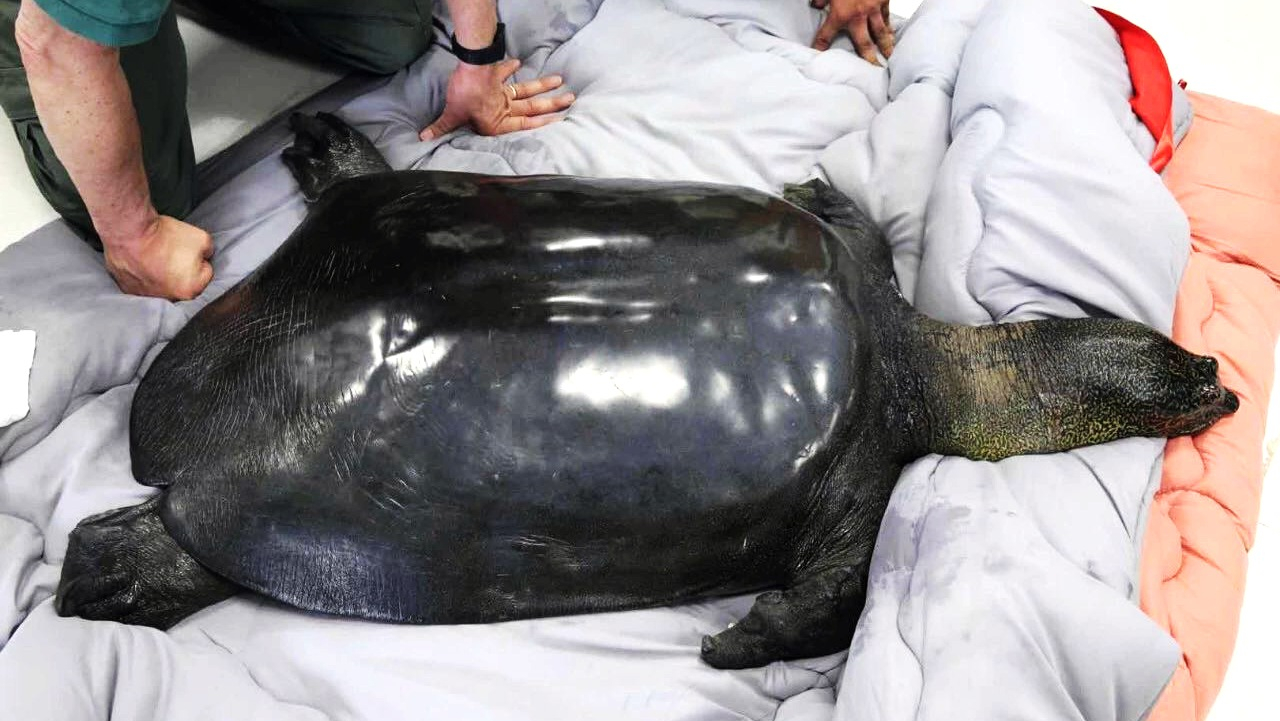
The last known female Yangtze giant softshell turtle (Rafetus swinhoei) died during a fifth artificial insemination last Saturday in Suzhou Zoo in China's eastern Jiangsu Province, signifying the defeat of efforts to sustain this endangered species.
A joint team made up of domestic and international experts from the zoo, the Wildlife Conservation Society (WCS) and the Turtle Survival Alliance (TSA) is working on the exact cause of death.
The nearly extinct water cat

A male Yangtze giant softshell turtle. /CCTV Photo
A male Yangtze giant softshell turtle. /CCTV Photo
In Yunnan province in the southwest, the Yangtze giant softshell turtle is nicknamed as water cat as it has leopard's spots on its cat-like head. When the turtle pops its head out of the water, it looks like a cat floating in the river.
Hailed as the largest living freshwater turtle in the world, the Yangtze giant softshell turtles can measure up to 1.5 meters in length and weigh over 100 kilograms. It is said that the turtle can live up to 160 years. They were once widely distributed in the Yangtze River Valley and the Red River Valley.
Since 2006, no Yangtze giant softshell turtle has been found in the Red River Valley. There were only five known Yangtze giant softshell turtles left in the world in 2016 and all of them were raised in captivity. Due to this fact, the turtle is listed as critically endangered by IUCN Red List.
To save the turtle, the first Yangtze giant softshell turtle protection seminar was held in Suzhou in September 2006. Chinese zoo officials, TSA, WCS and international experts reached a consensus on arranging a cross-zoo marriage for preserving the species.
In search of a bride
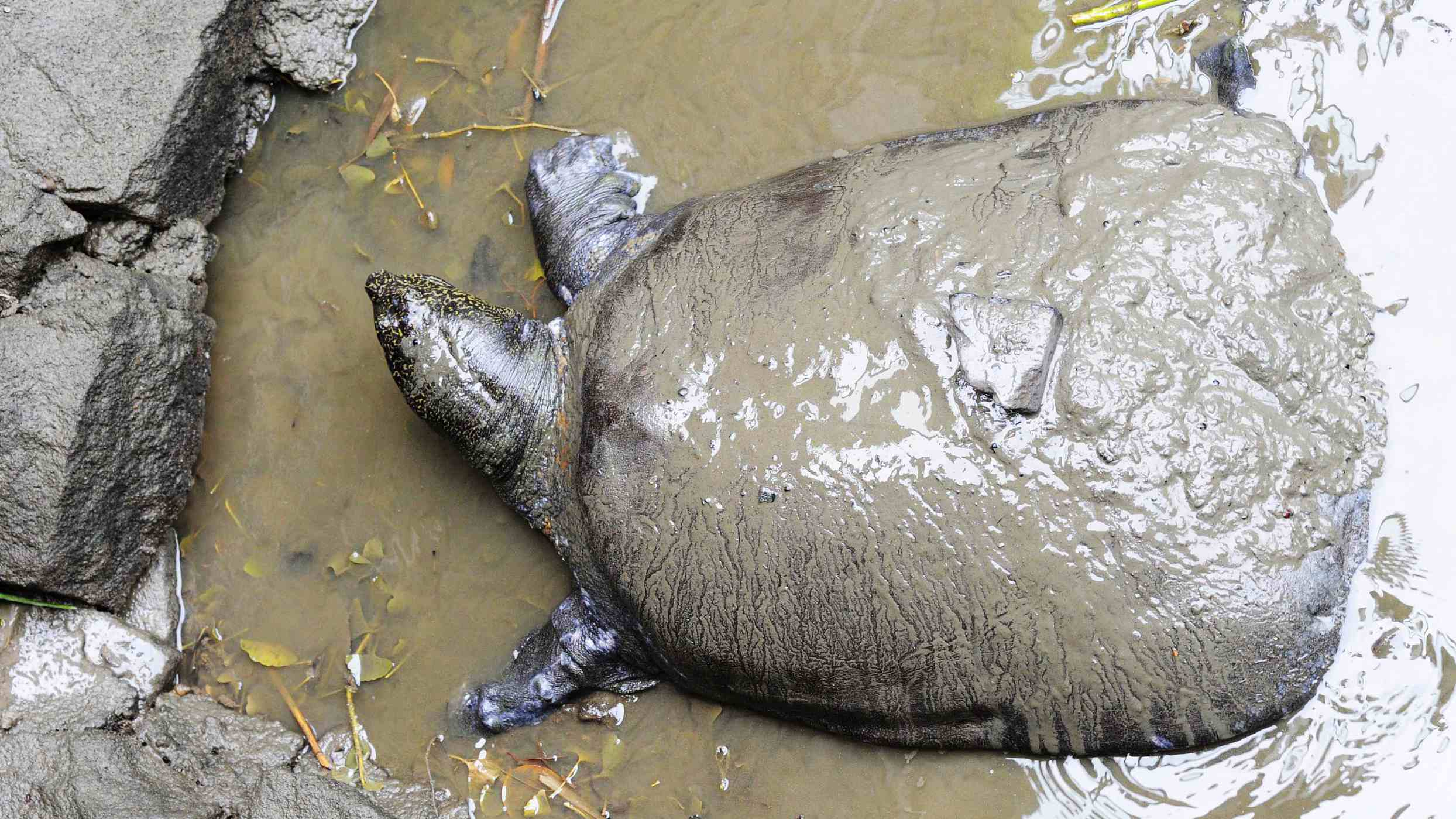
A female Yangtze giant softshell turtle. /VCG Photo
A female Yangtze giant softshell turtle. /VCG Photo
The original plan was to transfer the female Yangtze giant softshell at the Shanghai zoo to couple with the male at the Suzhou zoo. However, the female turtle didn't survive the winter of 2006. The other known female turtle named Yuanyuan in Xiyuan Temple has disappeared for years.
For years, people have mistaken the Yangtze giant softshell turtles as the Asian giant softshell turtle because its previous Chinese name “Yuan” now refers to the latter. With no known female turtle left, the hope of continuing the species seemed slim. The Chinese Association of Zoological Gardens (CAZG) then called on all zoos to take photos of “Yuans” at their establishments.
One photo from the Changsha zoo caught the attention of the experts. The spots on the turtle's head looked very much like a Yangtze giant softshell turtle rather than an Asian giant softshell turtle.
Right after the second seminar held in 2007, WCS project coordinator Lv Shunqing and TSA expert Gerald Kuchling came to the Changsha zoo. They confirmed that the turtle was actually a female Yangtze giant softshell turtle. Most encouraging of all was that the turtle continued to lay eggs over the years.
The bride was finally found despite all the twists and turns. The 80-year-old female Yangtze giant softshell turtle didn't know the fate of the species rested on it and the future partner that it had not met before.
A marriage with no child
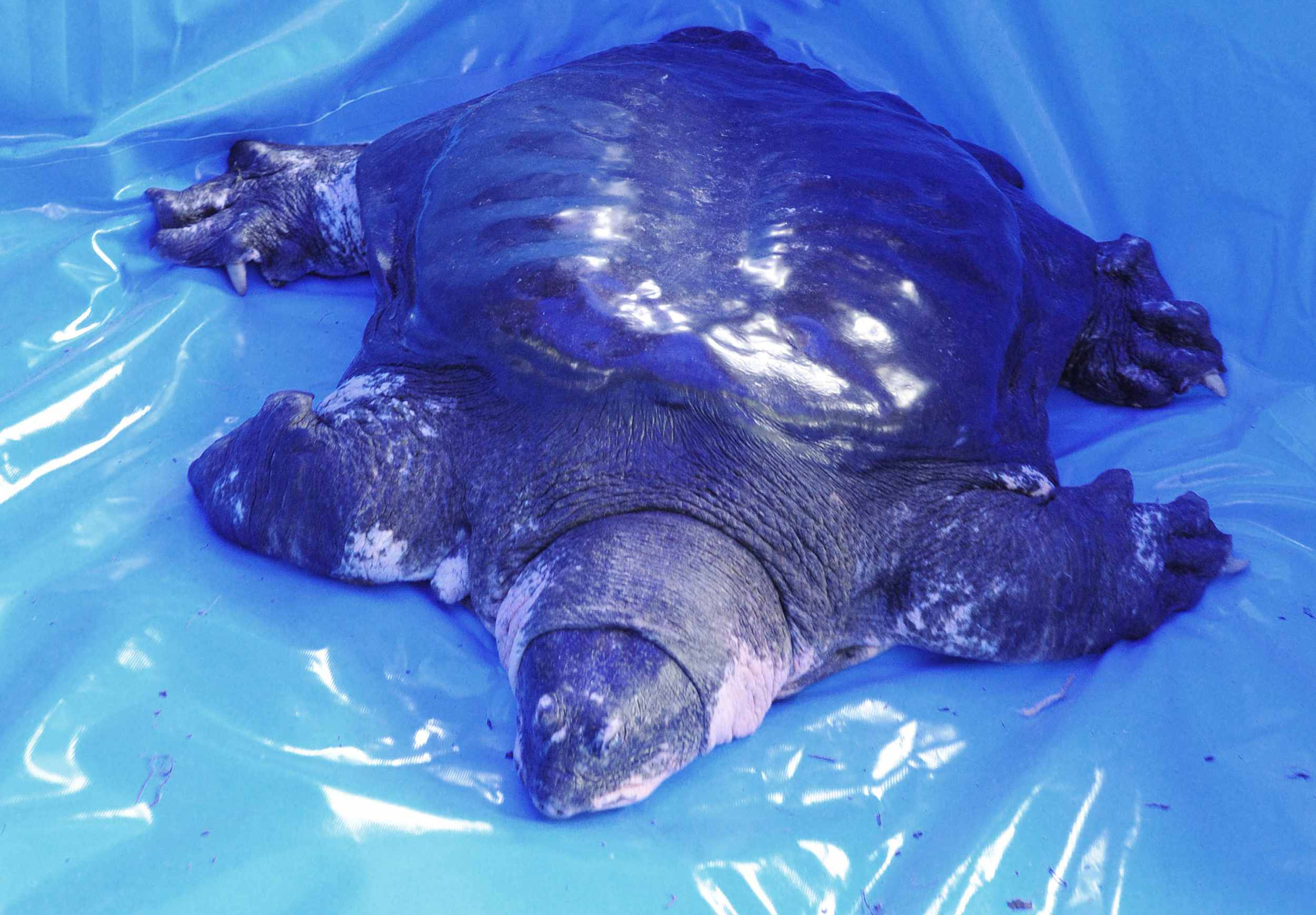
A male Yangtze giant softshell turtle is seen at Suzhou Zoo on May 6, 2015, in Suzhou, Jiangsu province of China. /VCG Photo
A male Yangtze giant softshell turtle is seen at Suzhou Zoo on May 6, 2015, in Suzhou, Jiangsu province of China. /VCG Photo
On May 6, 2008, the female Yangtze giant softshell turtle was safely transferred from her home at Changsha Zoo to the Suzhou Zoo. The same year, the new couple mated and over 100 eggs were delivered. Sadly, none was fertile.
From April to July in 2009, the female turtle laid four nests of eggs. There were fertile eggs among them this time but after artificial incubation, in less than a week the embryo died as it was still developing.
Experts suspected that the female Yangtze giant softshell turtle might not have taken in enough nutrients such as calcium, resulting in the thinness of the shell. However, they didn't give up after the first natural insemination.
Unfortunately, all fertile eggs born between 2010 and 2013 after the later procedures failed to turn into turtle babies. Because of the constant failure, they reluctantly turned to the last resort – artificial insemination.
The bold last resort
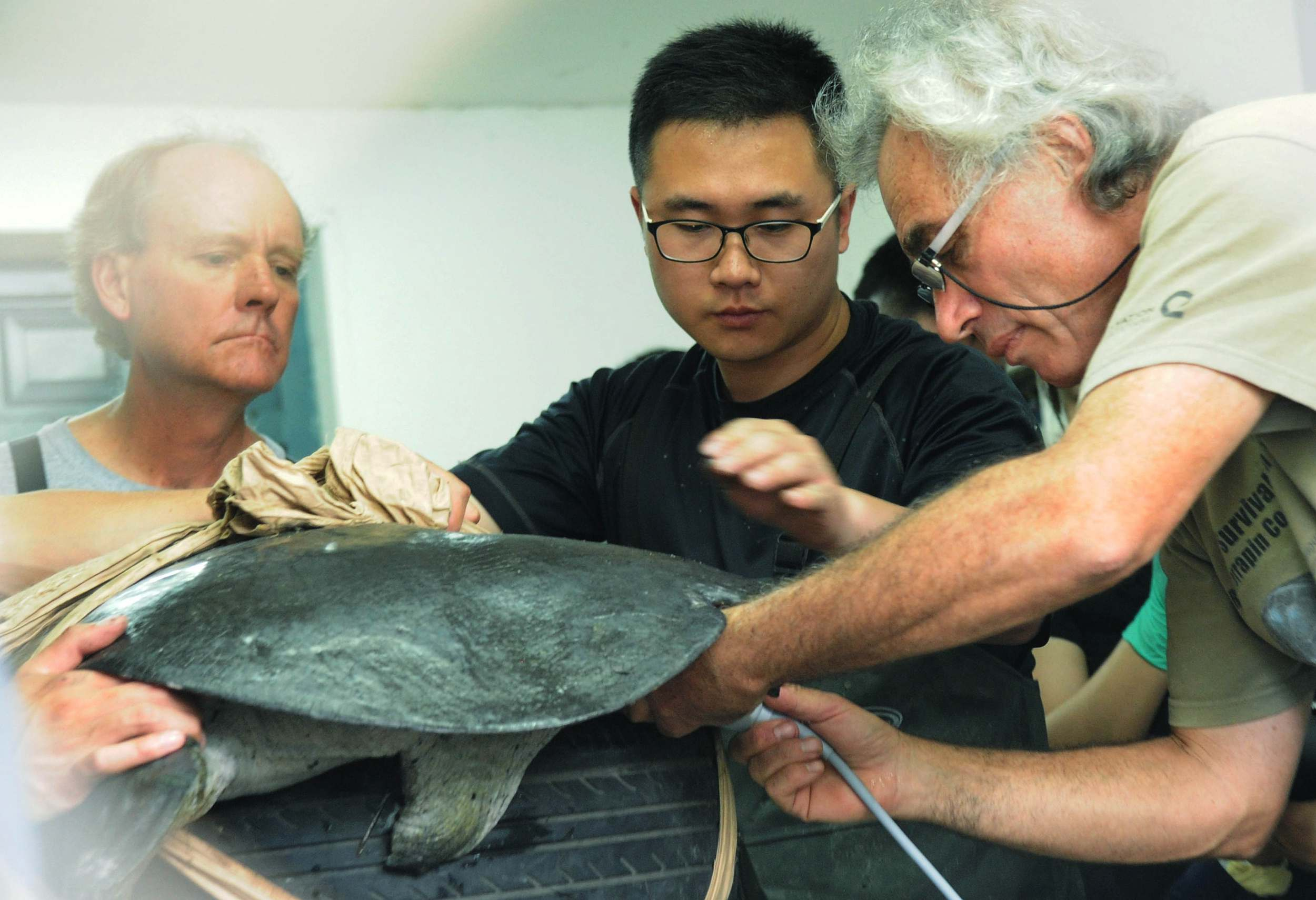
Animal experts and workers perform artificial insemination on a female Yangtze giant softshell turtle at Suzhou Zoo on May 6, 2015, in Suzhou, Jiangsu province of China. /VCG Photo
Animal experts and workers perform artificial insemination on a female Yangtze giant softshell turtle at Suzhou Zoo on May 6, 2015, in Suzhou, Jiangsu province of China. /VCG Photo
The summer of 2015 was unforgettable for experts as the first artificial insemination procedure began, during which they found out the other possible reason for infertile eggs – the damaged penis of the 100-year-old male turtle. Experts inferred that the male turtle was injured during a fight with other males.
Since the amount of semen collected from the male turtle was scarce with low vitality, the three artificial insemination procedures that took place in 2015 and 2016 all turned out to be failures. In 2017, two experts from the Leibniz zoo in Berlin, Germany joined the team and brought their most advanced appliances to make the fourth attempt.
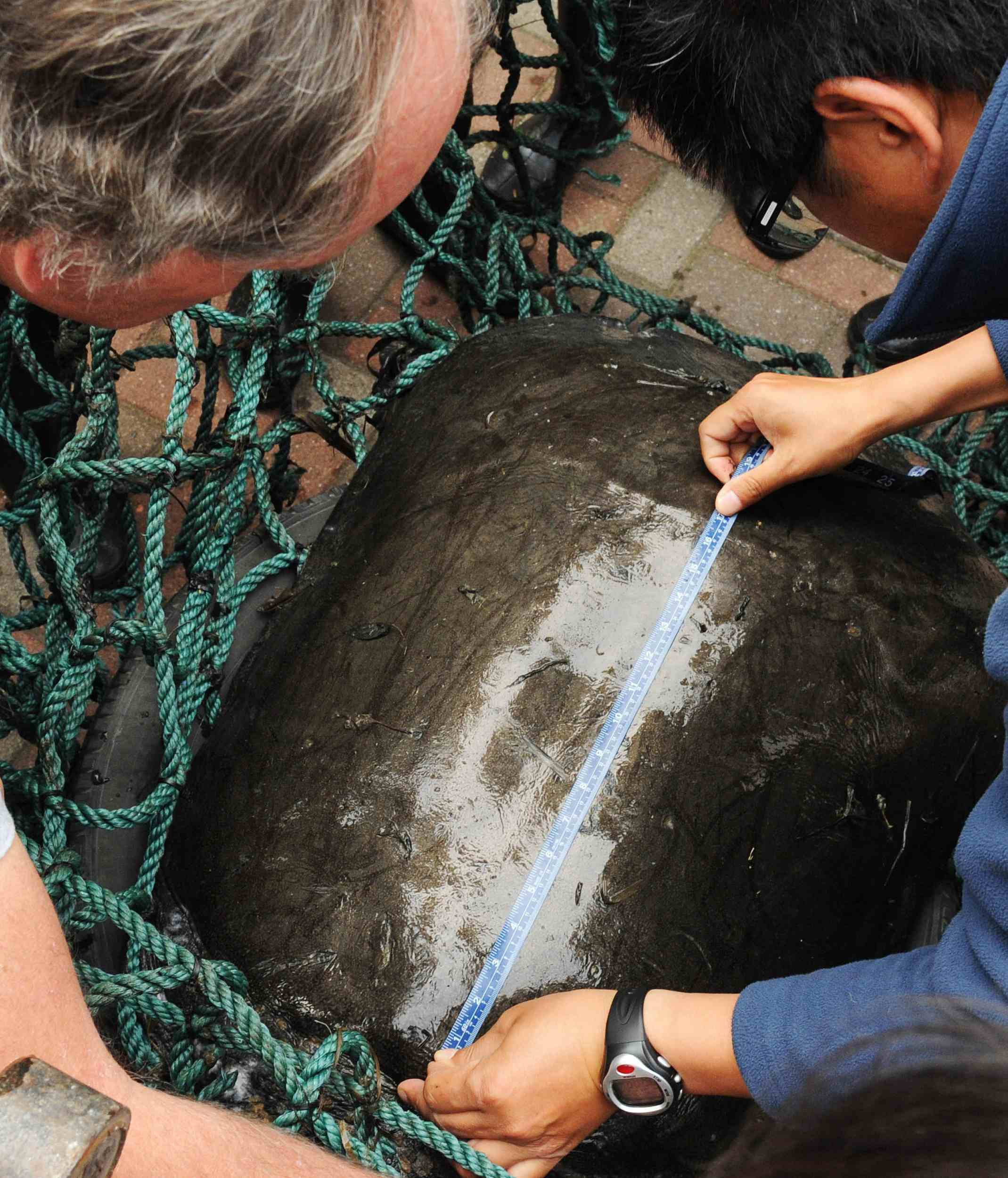
Animal experts and workers measure a female Yangtze giant softshell turtle in Suzhou. /VCG Photo
Animal experts and workers measure a female Yangtze giant softshell turtle in Suzhou. /VCG Photo
Even though experts were able to conduct insemination closer to the female turtle's ovary this time, no eggs were found afterward. The fifth attempt this year ended up in death. The last known female Yangtze giant softshell turtle left the world. Experts now can only put hopes in finding another bride, but will luck favor them this time?
Hope for the best
Species once on the brink of extinction like the crested ibis and the milu deer are lucky. With human intervention, their populations have recovered over the years. The number of the crested ibis increased from only seven in 1981 to over 3,000 now.
However, for species like the white northern rhino and the Yangtze giant softshell turtle, the men's efforts to save them seem futile. Will the future research help their populations recover again one day? We can only hope for the best.
(Cover image via CCTV)
(If you want to contribute and have specific expertise, please contact us at nature@cgtn.com.)

SITEMAP
Copyright © 2018 CGTN. Beijing ICP prepared NO.16065310-3
Copyright © 2018 CGTN. Beijing ICP prepared NO.16065310-3